Original article: L’importanza del vaccino: no-vax e falsi miti. Facciamo chiarezza, by Anna Maria Musto
“I don’t wanna get the vaccine, ‘cause I don’t know what’s inside!”
We have read and heard many sentences like it, but we take a painkiller without thinking twice when we have a headache. Sincerely, who worries to know what is inside a daily-use medicinal product? Maybe it is good to clarify several dynamics that are still seen with a veil of scepticism.
The pandemic we are going through for nearly a year is a long battle that gives us some trouble. Hopes are placed in the vaccine (Fig.1), which seems to be the light at the end of the tunnel, yeah, but not for everybody!
Besides a scientific challenge – in terms of efficiency – and logistics – in terms of distribution – another challenge, maybe the most feared, raised to fight: the communication challenge. The surveys confirm that a good percentage of the population will not run to get vaccinated at an international and national level as soon as the possibility is given. What does this mean?
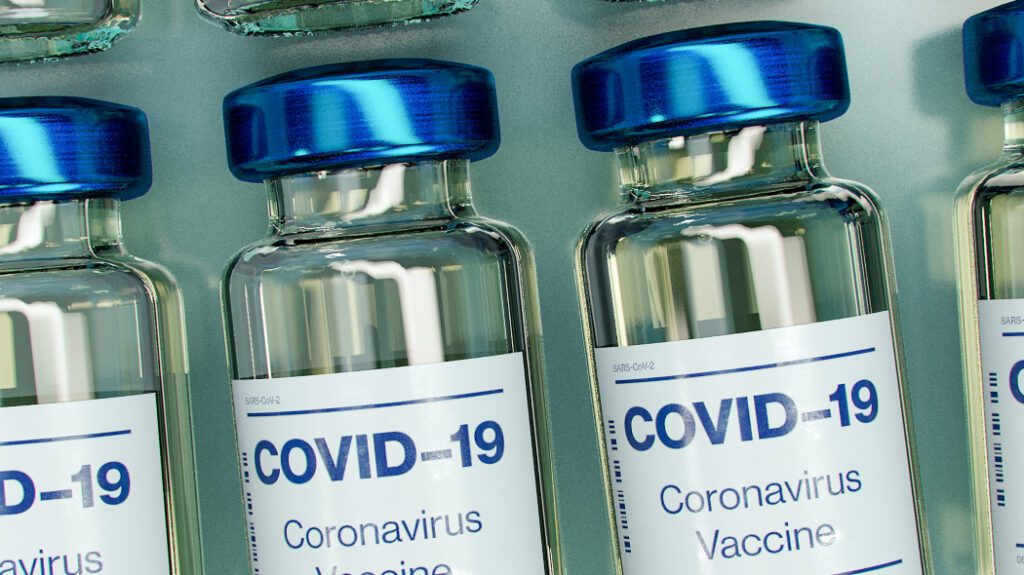
Science says that to achieve the famous “herd immunity“, a very high percentage of the people must be immune to the infection, so they must vaccinate themselves.
What is herd immunity?
The vaccination‘s effect is to protect the vaccinated subject against the infective agent, which, in this case, is SARS-CoV-2. Nevertheless, the vaccination extends to a large part of the population at risk and involves a protective effect on the not vaccinated subject; this is an indirect effect known as herd immunity or group immunity. Basically, the more people are immune, the more difficult it will be for the pathogen to find susceptible individuals. Acting in this way, also the part of the population – that cannot get the vaccine for different reasons – can benefit from protection. To obtain this result, nevertheless, more than 90% of the total population must be immune. So a huge number!
The herd immunity could be spontaneous, letting the majority of the population get infected. However, this is an unacceptable hypothesis, especially in a pandemic, because the number of deaths and hospitalizations would lead the national and private system care to collapse. On the other hand, the only way to obtain a successful herd immunity is only by an appropriate vaccination campaign that includes the most significant number of people.
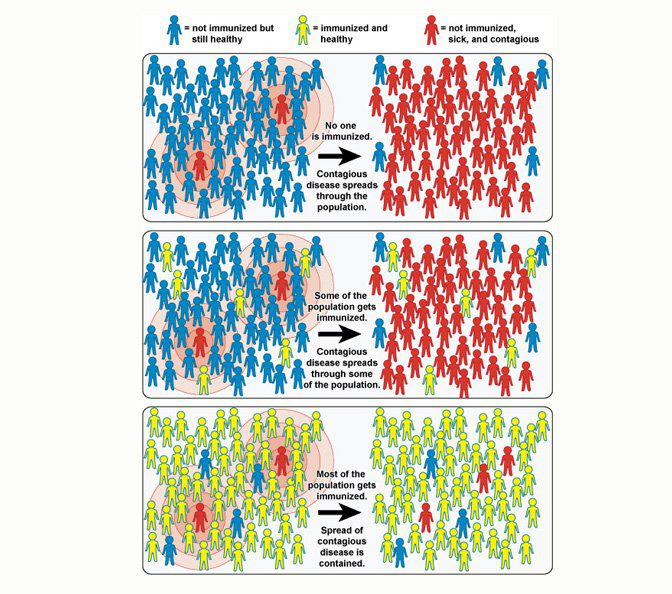
The new anti-Covid-19 vaccine
The New England Journal of Medicine – one of the most prestigious journals globally – published an article that proves the importance of a new safe and efficient vaccine. On the other hand, the news has grown new scepticism and perplexity, but it gives hopes for a quick return to normality.
This is an mRNA vaccine 95% efficient. It is a very high percentage because a vaccine will never be 100% effective.
What is an mRNA and what does “mRNA vaccine” mean?
The mRNA o messenger RNA is the genetic material that contains all the instructions to synthesize new proteins. It carries all the genetic information, codified by the DNA, from the cellular nucleus to the cytoplasm. They will be used to put all together the “bricks” founding the proteins, or rather the amino acids. This process is essential to build, repair, and keep all the biological functions. This is what our body keeps constantly doing.
The SARS-CoV-2 virus presents on its surface a protein called Spike protein (S). It is the keycard through which the virus enters into our cells due to the interaction with the ACE-2 receptor placed in the human cell to infect it. The protein S is clearly the factor that blocks the infection; it is necessary to shield it from the spike protein. How do you do it? It is necessary for the specific antibody that recognizes the protein, blocking it.

To stimulate the production of antibodies against the spike protein, researchers constructed tiny fragments of mRNA that contains the instructions to “build” the protein S. By injecting these fragments into the human body, the cells will catch them, which they will acquire the “instructions” to produce the protein S. By itself, the protein is harmless. Still, it is sufficient to “alarm” the immune system to produce antibodies.
The vaccine created by Pfizer and Moderna contains the segments of mRNA. Suppose a vaccinated person comes in contact with the virus. In that case, the antibodies will recognize the protein S – already “encountered” in the simulated attack with the vaccine – attacking it before it causes the infection.
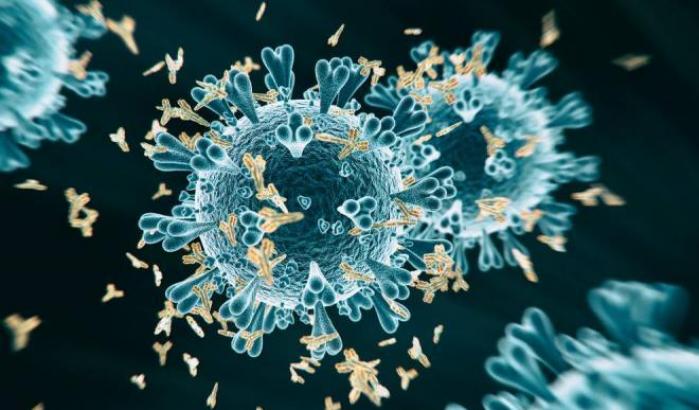
Safety of the anti-Covid vaccine
The beauty of science is to be able to demonstrate what is being acclaimed. The studies prove that the vaccine is safe. Why?
According to the abovementioned English scientific journal, researchers confirmed the vaccine safety and efficiency thanks to randomized trials of tens of thousands of people in phase three. There is much talk about the vaccine’s development speed, but it is necessary to consider the substantial funds made available for this purpose. Among other things, it is the first time that there are so many volunteers for the trial in a short time.
Is the vaccine sure in people with allergies? There were some uncertainties about the issue, especially after the news from the UK, a country that was the first to start the prophylaxis against SARS-CoV-2. Two highly allergic health professionals aged 40, who underwent vaccination, found a mild allergic reaction. For this reason, researchers confirmed that even these individuals could be vaccinated, while highly allergic people – with anaphylactic shock manifestations – should be vaccinated in a hospital environment.
Currently, the vaccination campaign excludes subjects immunocompromised – oncological patients during the chemotherapy, pregnant women, and children – because these categories need further studies.
Limits of the vaccine
The disadvantage of an mRNA vaccine is its instability. It needs to be kept at a temperature of -70°C to maintain its efficiency, and this required appropriate equipment for storage and transport. This could make distribution more difficult in some countries.
The duration of the vaccine’s immunity is still doubtful, but it should be between 8-12 months. It will be necessary to get a recall. The patients that firsts got sick and then recovered from Covid-19 have remained immune, with a maximum of 8 months. On a large scale, patients who got sick twice are rare, confirming that the disease gives immunity at least for 8 months. Scientists are trying to understand if this lapse of time can be extended to 12 months.
Who are the no-vax?
Unfortunately, despite the vaccination campaign, many sceptics are against the vaccine. Those people are called no-vax.
The term no-vax or antivaccine refers to the portion of the individuals who object to the vaccine’s administration, adopting a position contrary to the science community that affirms its importance, safety, and efficiency.
Many reasons brought to light this scepticism inherent in a percentage too high of the population. Vaccination is thought to be harmful to health or to conceal adverse reactions. No-vax states that it is done only to enrich the companies that produce vaccines. These wrong beliefs result from an incorrect conception of knowing how to dose the vaccine’s risks and benefits. The danger of a disease is often overestimated the threat of a disease, which leads to the predominance of baseless and scientifically invalid opinions.
Many theses of the no-vax come from fake news, easily found on the internet, but often they are based on conspiracy theories.
Autism and vaccine: false myths
The alarming messages that the internet disclose have contributed to creating radical movements against the administration of vaccines. In this context, talking about vaccines and children, doubts arose in the entire community: believing in a correlation between vaccines and autism is wrong (Fig. 5).
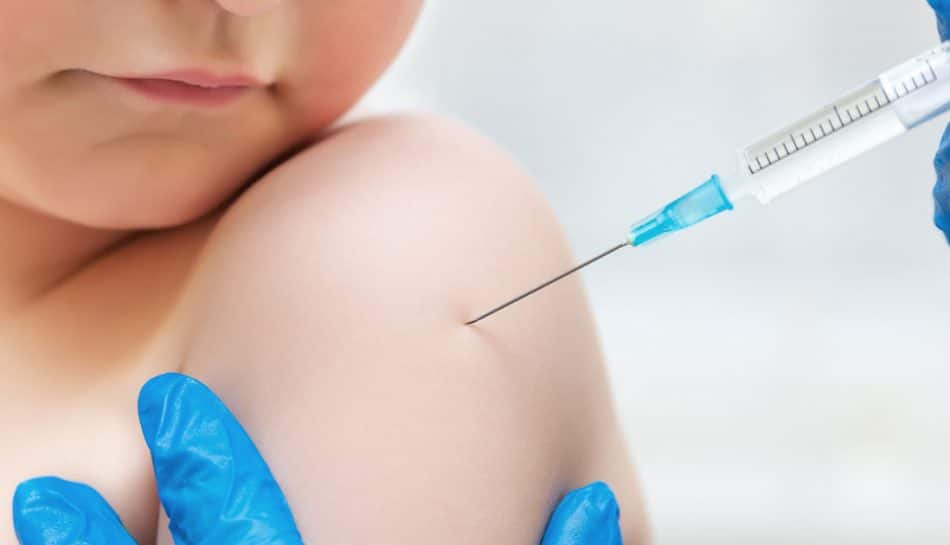
In the nineties, an English study published in The Lancet raises the hypothesis that the vaccine against measles, mumps, and rubella (MPR), could be associated with autism. Several studies in both Europe and the US evaluated the theory, but none of them has confirmed the existence of a causal relationship between the MPR vaccine and autism. The same authors of the English study subsequently withdrew their conclusions and in 2010 the same magazine formally withdrew that article.
In March 2013, the Journal of Pediatrics published an interesting article (“Increasing Exposure to Antibody-Stimulating Proteins and Polysaccharides in Vaccines Is Not Associated with Risk of Autism“); it describes a study conducted on 256 children with autism spectrum disorders, compared with 752 no autistic children. Scientists quantified the cumulative total exposure to antigens in the vaccines in their first two years of life, adding the maximum antigens that the children were exposed to in each vaccination session. The results showed and confirmed that there is no association between vaccines and autism.
The vaccine in Italy
Vaccine’s first distribution in Italy arrived at the beginning of January 2021. It comprehended about 3,4 million doses, sufficient to vaccinate 1,8 million people. After the first injection, a recall after three weeks was necessary. The vaccine is accessible for free in all countries. Priority is given to healthcare workers, the guests of care homes for the elderly, and then to all categories of risk and people over 65 years old (Fig.6).
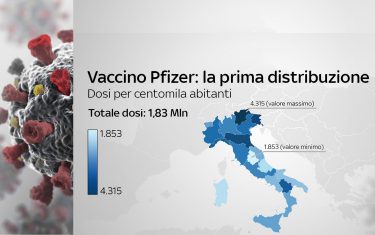
Pavilions have been designed for mass vaccinations, installed in the most central squares throughout Italy (Fig.7). They have the shape of a flower and are easily removable and reassembleable made with natural materials. “L’Italia rinasce con un fiore” (Italy reborn with a flower), is the slogan that goes with this symbol: rebirth, hope and light that is possible to glimpse. An important message to believe.

Nowadays the misinformation travels very fast on the internet, which can be dangerous and harmful during a pandemic. Unfortunately, it is necessary to appeal to all those who allow themselves to be conditioned by scepticism spreading without logic rigor. Science is the only thing that will get us through the dark, that we are living, into the light.
Martina Calderato
Bibliography
- Frank DeStefano, Cristofer S Prince, Eric S Weintraub, “Increasing exposure to antibody-stimulating proteins and polysaccharides in vaccines is not associated with risk of autism” Journal of Pediatrics, 2013.
- General Medical Council, Fitness to Practise Panel Hearing, 24 May 2010, Andrew Wakefield, “Determination of Serious Professional Misconduct” (PDF). General Medical Council.
- Fernando P. Polack, MD, Stephen J. Thomas, MD, Nicholas Kitchin, MD, Judith Absalon, MD, Alejandra Gurtman, MD, Stephen Lockhart, DM, John L. Perez, MD, Gonzalo Pérez Marc, MD, Edson D. Moreira, MD, Cristiano Zerbini, MD, Ruth Bailey, B.Sc., Kena A. Swanson, “Safety and Efficacy of the BNT162b2 mRNA Covid-19 Vaccine” The New England Journal of Medicine, 2020
- https://www.medicalfacts.it/2020/11/15/coronavirus-cose-un-vaccino-a-mrna/
- http://www.salute.gov.it/portale/news/p3_2_1_1_1.jsp?menu=notizie&p=dalministero&id=1524
- https://www.auxologico.it/approfondimenti/immunita-gregge-covid-19
- https://salute.gazzetta.it/salute/17-12-2020/covid-19-limmunologo-vaccino-in-sicurezza-anche-per-gli-allergici-51883
Pictures bibliography
- https://www.wired.it/scienza/medicina/2020/11/19/coronavirus-covid-19-vaccino-efficacia/?refresh_ce=
- https://www.pbs.org/wgbh/nova/article/herd-immunity/
- https://sibbm.zanichelli.it/italiano/2020/08/23/infezione-biologia-strutturale/
- https://www.ilmessaggero.it/salute/moltosalute/covid_cura_anticorpi_monoclonali_sei_farmaci_trump_spallanzani-5696803.html
- https://www.uppa.it/medicina/farmaci/vaccinazioni-e-autismo-cosa-c-e-di-vero/
- https://tg24.sky.it/salute-e-benessere/2020/12/18/covid-vaccino-pfizer-italia-distribuzione-regioni-mappa
- https://www.repubblica.it/cronaca/2020/12/13/news/coronavirus_arcuri_e_boeri_ecco_il_piano_vaccini-278148185/